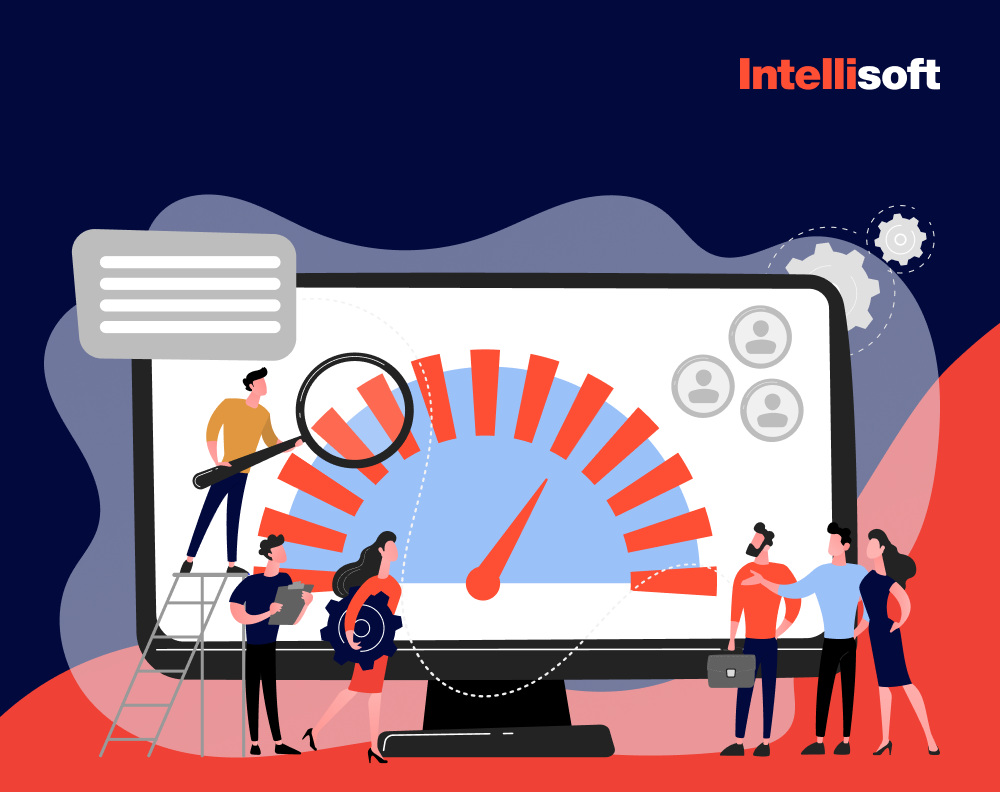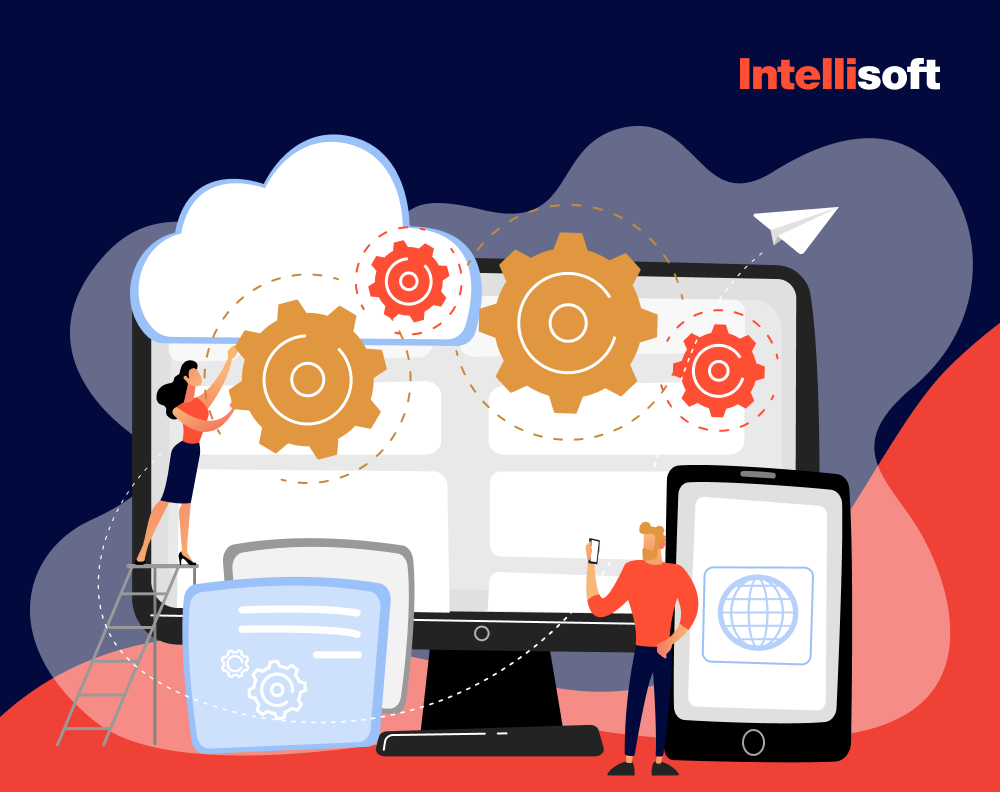The success of the entire project largely depends on what kind of programmers you find, hire, and how they will be implemented in the project. However, due to the large shortage of IT specialists in the European market (800,000 IT employees), the time of acquisition and adaptation of programmers in recent years has increased significantly, and, consequently, hiring costs have increased.
Even though Europe has seen a drop in annual contract value (ACV) by an average annual reduction of -6.3% in 2014-2018, this region of the world still makes up for 38% of the Global ITO contract values. Our team collected a number of data on the recruitment and implementation in the project and prepared recommendations on how to minimize the costs of these processes.
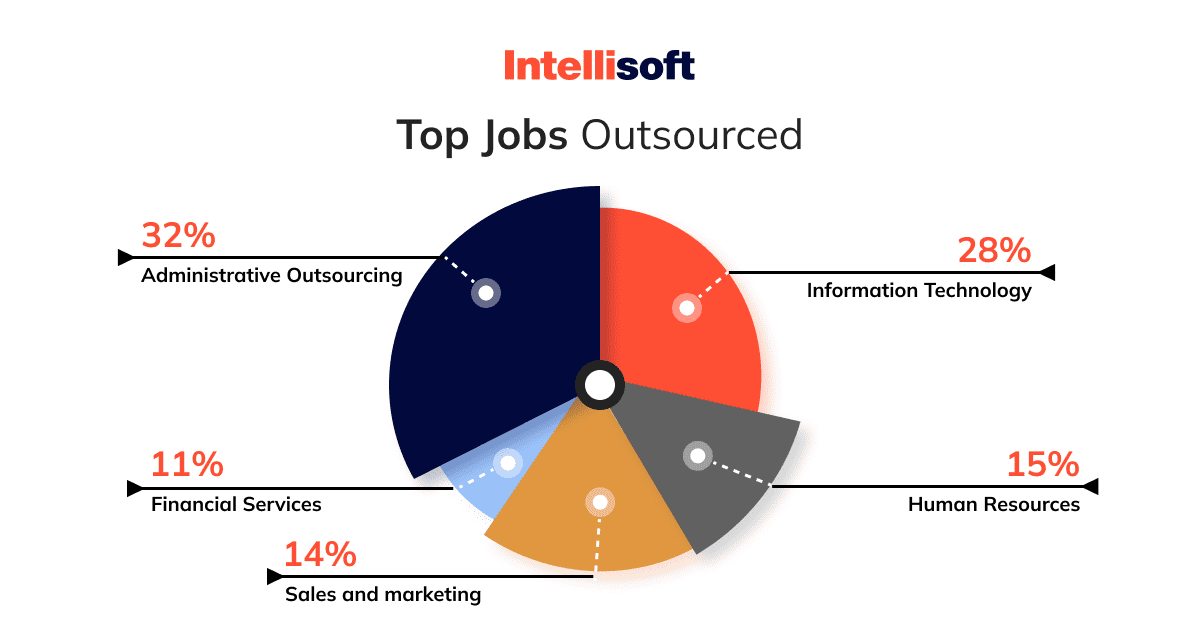
Table of Contents
Talent Acquisition in IT
Interest in the career of a developer and engineer continues to grow, but this does not mean that finding a good IT expert is easy. On the contrary, the data collected by multiple outsourcing agencies shows that the time it takes to acquire technical talents increases and is approximately 35 days. Overall, IT executives face the talent shortage as the most significant barrier to 64 percent of emerging technologies, compared with only 4 percent in 2020, according to a new survey from Gartner, Inc.
Given the dynamics of work in IT and time it takes to implement projects, this number is a lot. In addition, the IT market has a higher turnover rate than other industries. This is mainly due to the rapid development of the programming industry and constant tech improvements.
However, maintaining the stability of the team can cause problems. The cost of finding and employing a programmer also increases, depending on the needs of the project, the level of the candidate’s proficiency, and the necessary technologies. Up to 30% of companies find it difficult to find competent, qualified programmers that have mastered the languages required for their project. This data shows that building an IT team that fits needs and business goals is becoming trickier with each new year. Forbes shares more challenges that enterprises still face.
Recruitment Process
In this article, we focus on the hiring stages and challenges for recruiters. Depending on the needs, the recruitment process may consist of different stages of different duration. The time and cost of hiring an employee depend on several factors. In addition, a lengthy process of many steps can potentially harm your business. After all, candidates have to keep in touch throughout the hiring process. The longer it takes and more difficult to select an applicant, the higher the risk that candidates will leave.
It is important to develop a hiring process that will assess all the necessary skills and competencies that a programmer should possess, and will be effective enough so that the interest and commitment of candidates will not be lost. Finding a balance between these two things is difficult and requires experience, but it’s the only way to improve the efficiency and effectiveness of hiring, thereby reducing hiring time and costs.
Related readings:
- Thrilling IT Outsourcing Case Studies Businesses Can Learn from
- Make Your Projects Successful: Tips for Building a Powerful Project Team Structure
- Remote Development Team Structure in a Nutshell
- How to Sign a Contract with an IT Outsourcing Agency
- Software Development Outsourcing: Building a Winning Team
Adaptation to IT
It may seem that finding and hiring a good programmer is already a success. However, after hiring an employee or team of engineers, you face the most difficult and important task, which is the introduction of a new employee (the so-called “adaptation” or “onboarding.”) Effective adaptation is a real success, the consequences of which will be felt with further cooperation with a new staff member.
The cost of onboarding and training an employee should be considered as part of the cost of recruitment because adaptation affects the quality of the future employee’s work. Usually, the process of introducing an employee takes from 3 to 6 months. The first months of work are crucial for solving issues such as the integration of the employee with the rest of the team, obtaining familiarity with the project, and getting acquainted with the processes and nuances of the company.
All these activities are aimed at ensuring the effectiveness and productivity of the new employee, and competently carried out adaptation also significantly reduces the risk of employee rotation.
Know What They Should Do
Two basic categories of developers are known. Back-end and front-end development teams may work on the same project, but a user cannot see the results of back-end work with the naked eye. On the contrary, the product of the front-end is what we can see. It does not mean that one role is less important than another. So, make a difference first. Entry-level front-end developers earn an average of $65,407 annually, so know what you’re paying for.
What Do Front-End Developers Do?
Front-end developers are mainly concerned with creating user-friendly and attractive websites. They make the platform interactive by adding a graphical interface so that users can easily interact with the company’s products and services.
Front-end JavaScript frameworks such as React and Vue are used to create an interactive user interface, a component-oriented application, and large single-page apps, respectively. In addition, front-end developers also use Angular to create applications that run on mobile devices and desktops.

What Do Back-End Developers Do?
Back-end developers step into the game when there is a need to access data from servers and make the website highly responsive. Internal development basically consists of three parts: server, application, and database. Specialists of this type should have knowledge of server-side JavaScript languages, such as Node.js, Express.js and others. Also, they should be aware of various databases such as SQL and MongoDB.
Knowledge of basic Javascript frameworks such as Express, Next.js, and Koa helps them build a more robust foundation and API. The average backend developer salary is $107,293 as of December 27, 2021, so know what you’re paying for.

What Are the Roles of Full-Stack Developers?
They do everything!
full-stack developers know both client-side (external) and internal coding. This does not mean that in every project they perform the coding of the entire site or application. If necessary, they can handle coding on both sides. Agencies are now primarily looking for specialists who can work on all parts of the site. This is where full-stack developers come to the rescue. Full-stack developers are best suited for prototyping.
But they’re not often the best choice for building a database architecture or any particular front-end design.
What about the necessary skills for developers? Now that you know what these developers do and why, it’s better to decide on the skills required for your business and particular project.
Skills and Qualifications That a Developer Should Have
Outsourcing for your web development is the best option if your own team is busy with another project or you want to reduce the operating costs of developing web applications. Outsourcing JavaScript developers has now become a trend among companies due to the many benefits.
Here are some of them:
- Reduce the total cost of development
- Get access to world-class JavaScript experts
- Reduction of risk factors
- Accelerated development
Sure thing, it is possible to detect some gaps too. Disadvantages of hiring developers through outsourcing include:
- Interoperability problem due to different time zone
- Language barrier
If you want to hire the best development company, then there are some organizations that give honest reviews about outsourcing companies like Clutch and others.
Thanks to the GoodFirms platform, it is best to find out the rating of outsourcing companies. If you look at the hiring pool, you’ll notice that JavaScript programmers are more expensive in the United States and Australia than in Asia and Eastern Europe.
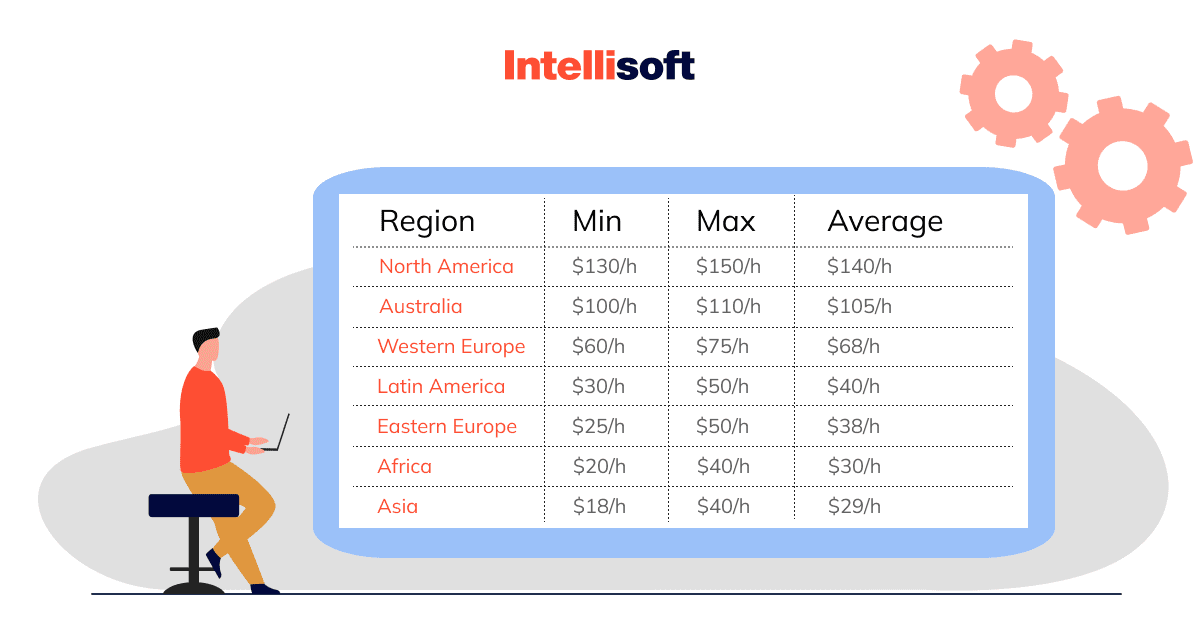
Off We Go: Preparation Stages
Be curious! After making a final list of companies that meet your requirements and look solid, contact them personally. At this stage, it is very important not to rush. In addition to meetings with managers and agreeing on conditions, ask for more information:
- Check out the portfolio on the company’s website, as well as their profile on Dribbble, GitHub, Facebook.
- Ask to be shown the company’s office during a video call.
- Skype or Zoom with key people. Ask about their experience and how long they have been with the company. So you will understand whether you should expect staff turnover.
- Check out their code examples if you have a technical partner you trust.
- Find out how quickly they can respond to urgent tasks and include the appropriate conditions in the contract.
- Prepare and submit a test task with a specified deadline.
Take Care of Your Security: Yes, It Also Requires Time!
In the digital age, companies are concerned about vulnerability and data security. When outsourcing a project, be prepared to transfer all the necessary business information.
If sensitive information is not handled properly, your data or intellectual property may be misused. We recommend that you sign a non-disclosure agreement before sharing any confidential information.
In addition, consider hiring such an outsourcer who regularly conducts network and workplace safety audits. The company must use special software that will protect and prevent data leakage.
Choosing a Field for Outsourcing
This is a crucial step required to analyze the activities of your company and understand which non-core activities are the most difficult to manage, show the least effectiveness, etc. Large companies often outsource transportation & logistics, repair units, and more, while small firms outsource accounting, legal issues, IT tasks, and more.
Choosing a Partner
The main selection criterion is the market image and the availability of the partner’s resources (e.g., personnel, financial, production, etc.) For example, it is essential for a logistics operator to have its own warehouses, an extensive fleet of vehicles, and trained personnel. The willingness of a particular company to handle the volumes required by the customer is also vital. If the outsourcing company already has several clients who just have enough resources, the additional load can be fatal.
Choose at least 3-5 options. Large companies and government organizations select partners through tenders. After the options are selected, negotiations begin with representatives of every outsourcing agency on the list.
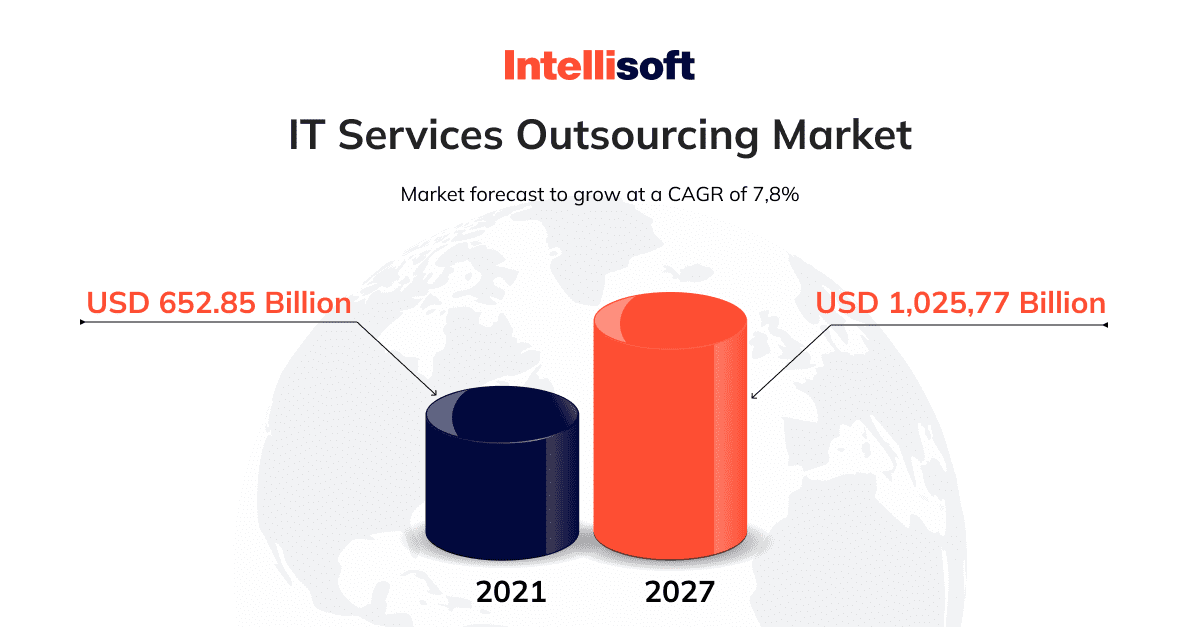
Signing the Contract
An outsourcing agreement is actually a contract for the provision of paid services. In many cases, it requires a mandatory written form for such a document. The contract may contain the following provisions:
- The names of the parties and the basis for their cooperation.
- The subject of the contract (a list of services that the outsourcing company has to provide).
- The scope of services provided (if it can be determined in advance) or the procedure for determining this volume.
- Contract price. It can be expressed in a fixed amount or parts.
- Rights and obligations of each party.
- Ways to control the activities of the outsourced team(s).
- Responsibility of each party for non-fulfillment of its obligations. Penalties should be described in detail here.
- Dispute resolution procedure.
- Terms & conditions of the contract. Most often, it is concluded for a year with the possibility of prolongation.
- The procedure for making changes to the contract and its termination.
- Details of the parties, signatures, and seals.
Financial Aspects and Payments
The amount of prepayment is usually prescribed in the contract. Sometimes, the payment is divided into parts if the activity that is outsourced involves execution in several stages. At the pre-last stage, the remaining amount is paid if an advance payment has been made or the entire amount indicated in the contract.
Lastly, do not forget to monitor the performance of the contractor. Usually, to track the results of the outsourced activities, an outsourcing agency uses its own supervisory authorities. Sometimes, control is carried out by the heads of related divisions of the company.
Verdict
So, there is no universal answer to how long it may take to find a reliable outsourcing agency and hire developers. You may estimate the time based on your business goals, project’s needs, and everything mentioned in this post. On average, it may take you from three months up to half a year to hire outsourced experts for your software project. The size of your business and amount of employees matter as well.
One thing we can say for sure is that Intellisoft helps to find the right staff within the shortest possible time. It may even take just a few weeks to find IT professionals for your project and get started. If you are ready for positive changes, get in touch with us, and we’ll let you know how things work exactly.


